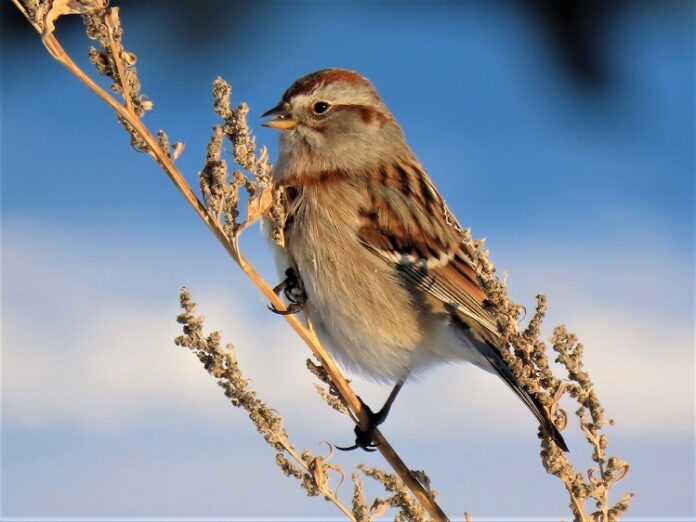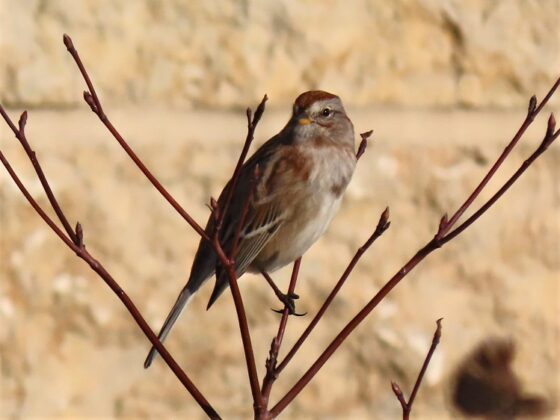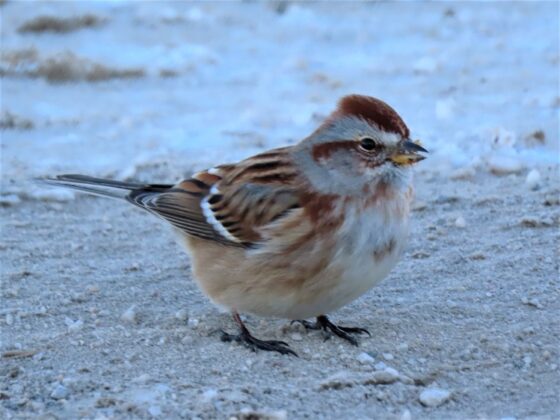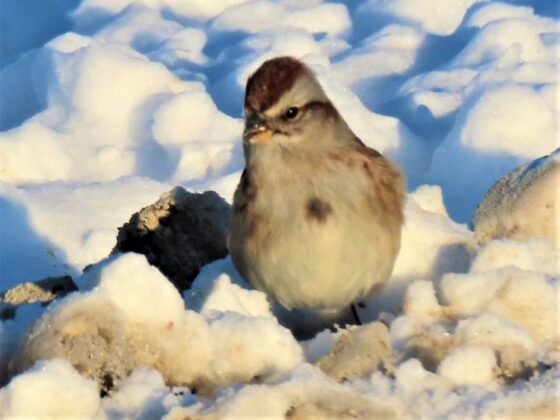I have enjoyed watching the American tree sparrows this year. The name tree sparrow is a misnomer because it is not closely associated with trees.
While they are living in Iowa, they roost in brush piles and shrubs. During their breeding season, they nest in shrubs and grasses in northern Canada.
Tree sparrows spend the winter in Iowa, arriving in early November and staying until the first part of April. They can survive temperatures of -20 F if they can find food.
In early spring, when they head toward their summer breeding areas in Canada, some of them fly more than 2,000 miles. It has been found that many of the birds return to the same wintering areas year after year during their nine-year life span.
The tree sparrow is easy to identify. It resembles the common house sparrow but there are differences. The tree sparrow has a rufous crown, two white wing bars on its brown wings and a long notched tail. Its most distinctive features are a small dark spot in the middle of its gray breast and its bicolored bill. The upper part of the bill is dark and the lower mandible is yellow.
The American tree sparrow is often confused with a chipping sparrow. The chipping sparrow arrives in Iowa about the time the tree sparrow leaves. The chipping sparrow does not have a breast spot, and its bill is all black.
Both of these birds are in the group called New World Sparrows. This group contains small to medium-sized birds, with rounded wings, a brownish streaked appearance and short, conical bills that are used to husk seeds. The common house sparrows, which are not native to the U.S., is a member of the Old World Sparrow group.
The tree sparrow’s normal diet in winter is made up of weed and grass seeds and dry berries. One study found more than 1,000 seeds in the bird’s digestive system. The seeds included ragweed, lambsquarter, chickweed and sunflowers.
They provide a valuable service to farmers and gardeners by eating noxious weed seeds. At feeders they will eat millet seed, cracked corn, sunflower seeds and peanut butter. In summer their diet shifts to insects, especially when they are feeding young.
They are interesting birds to watch at a feeder. They will frequently do a “double scratch” in which both feet moved backward at the same time. In their natural environment they do this to move leaf litter to find food, and they do it instinctively when standing deep in bird food where there is no leaf litter to remove.
The tree sparrow has an average weight of eight-tenths of an ounce. Because of their high metabolism, they eat one-third of their body weight in seeds per day. This is equivalent to a 150-pound person eating 50 pounds of food each day.
The American Tree Sparrow is not endangered, nor is it on any watch list. However, its population will vary depending on weather conditions, snow cover and food supply. In winter they are more abundant in the central and eastern parts of the Great Plains states.
In past Christmas bird counts, their numbers have varied greatly. This year 153 were observed in the Des Moines Audubon bird count of 2020, and in Dallas County 69 American tree sparrows were observed. It ranked as the 12th most common bird seen during the count.
This has been a difficult winter for birds. The ice and snow have covered their natural foods, bringing more than the usual numbers of birds to my feeder. I have even had a few pheasants eating the seeds that have fallen on the ground. The last few warm days that have given a hint of spring has caused even more activity at the feeder. The birds are eating ravenously in preparation for their spring migration.



















